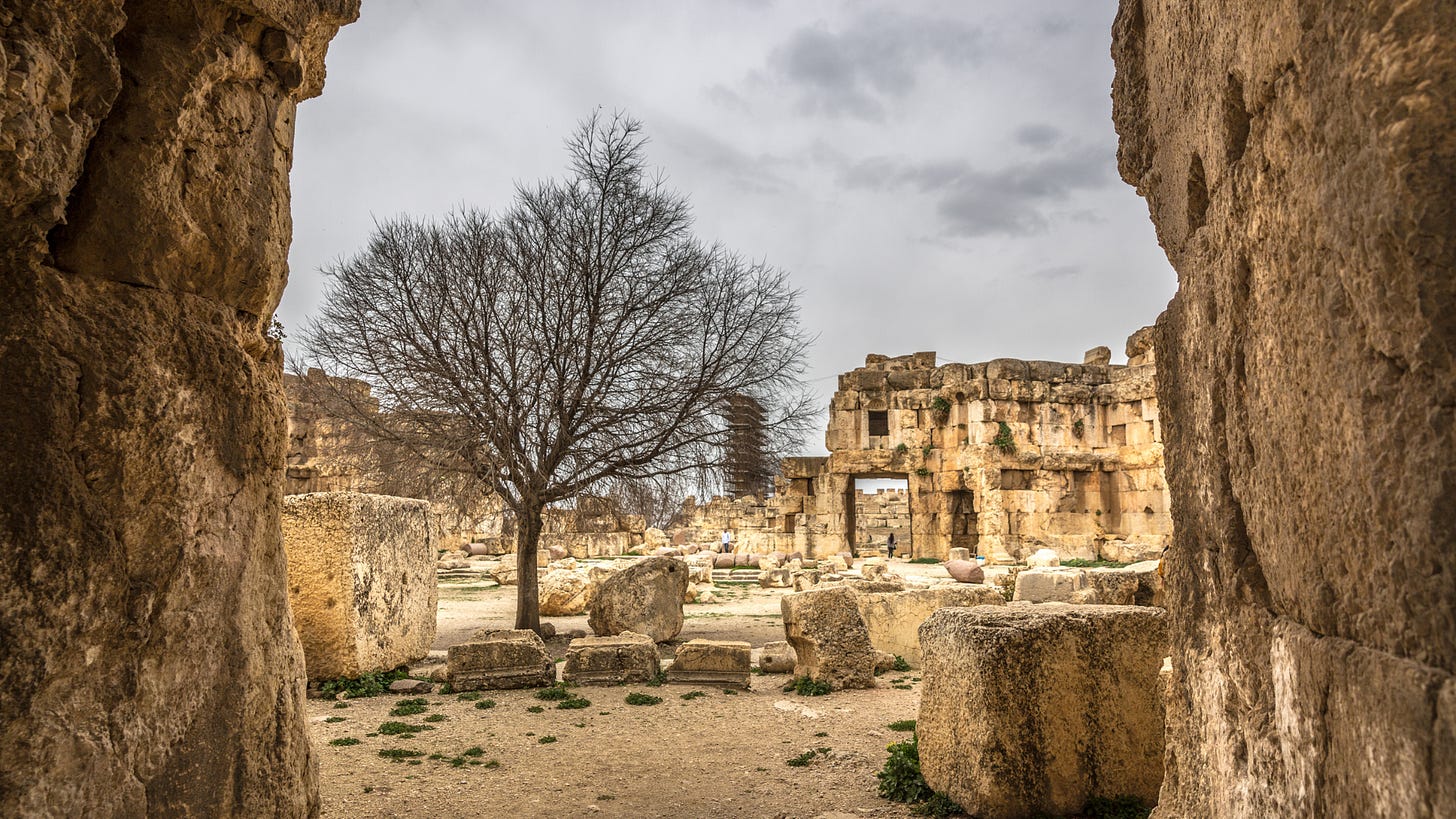Fresh Batch #163: What Are the Origins of Baalbek?
The Alleged First and Only Historical Authority
Robert Wood wrote (Ruins of Balbec, pp. 7, 8.), “We shall then suppose, with Macrobius, that our Heliopolis received her idolatry from the city of the same name in Egypt, and practised it with additional rites from Assyria: but, for the sake of those who would trace this matter higher, we shall just observe, first, that the Egyptian Heliopolis was situated on the confines of Egypt and Arabia; if we reject the fabulous origin of the Egyptian Heliopolis in Diodorus (Lib. 5.), and adopt Pliny’s account (Lib. 5, cap. 29.), we shall find the Sun was worshiped in Arabia before this city was built.”
Solis quoque oppidum quod non procul Memphi, in Ægypti situ diximus, Arabas conditores habere.—Pliny
Translation: Solis as well, a town not far from Memphis, which we said was situated in Egypt, had Arab founders.
Should Baalbek be Solis, or Heliopolis, which I don’t know that it is, it’d indicate an Arab origin, which implies youth, not antiquity. However, we will show the problem with supposing Arab origin in the next fresh batch when I show you metals which at the very least demonstrate Roman origin, if they are authentic and accurately placed. Wood continued (Ib. p. 8.), “Macrobius proceeds to show that the divinity he speaks of was both Jupiter and the Sun; ‘this appears by the rites of the worship, and by the attributes of the statue, which is of gold, representing a person without a beard, who holds in his right hand a whip, charioteer-like, and in his left a thunderbolt, together with ears of corn; all which mark the united powers of Jupiter and the Sun.’ Again, ‘The temple excels in divination, which belongs to Apollo or the Sun: the statue of the god is carried as the statues of the gods are in the Circensian Games, generally supported by the principal persons of the province, having their heads shaven, and being purified by long chastity; they are hurried violently on, not by their choice, but by the impulse of the divinity, in the same manner as the statues of the Two Fortunes at Antium are carried to give oracular answers.’
Without inscriptions, most of this must be left to interpretation. The location could be younger, and of Arabian creation, but that would disregard the Roman culture found there. What if the deity was Tinia, the Etrusco-Phoenician precursor to Jupiter, from whence Minerva sprung? If the location is older than Roman civilization, then one wouldn’t need to overlook the Phoenician history because, as I’ve demonstrated, Phoenician history is ancient Italian, and thus Celtic, not Jewish or Mesopotamian culture.
Wood tried to rationalize this chronological situation, which, in my opinion, though no fault of his own, he failed. He wrote (Ib. p. 8.), “It may be alleged that the same period of history is also silent with regard to the buildings of Palmyra; though it appears probable, from our account of the antient state of that place, that at this time it was adorned with works of great magnificence; and therefore that the buildings of Heliopolis might also have then existed, though they escaped the notice of historians.
“In answer to this we must observe, that, besides the obscurity in which Palmyra was kept, as long as it remained an independent state, by a most singular separation from the rest of the world, all accounts of that people from their own annals are lost, except what the inscriptions have preserved; but the history of Seleucidæ is known, and hath recorded less important works of those kings than the buildings of Heliopolis.”
The buildings of Heliopolis escaped the notice of historians, much like Solomon’s temple and pyramids also escaped the notice of historians. The conclusions I’ve arrived at could be that most of the so-called accounts of historians are fabrications of monks in the Middle Ages, or that the buildings predate the accounts we have in the historical record, or that the buildings are much younger than pretended, and may even be creations to attract gullible tourists to those regions. There are other conclusions to draw, I’m sure, but these are the ones that I arrive at when trying to make sense of the chronological situation and the lack of authentic artifacts and accounts from the time these cultures thrived.
There is certainly a Roman history or Roman-inspired history at Baalbek, but we’ll dive into that in the rest of the article. For those who aren’t members but who need to catch up, invest in the Spirit Whirled series and then The Real Universal Empire.







Become a member to access the rest of this article.
Keep reading with a 7-day free trial
Subscribe to Ancient History, Mythology, & Epic Fantasy to keep reading this post and get 7 days of free access to the full post archives.




